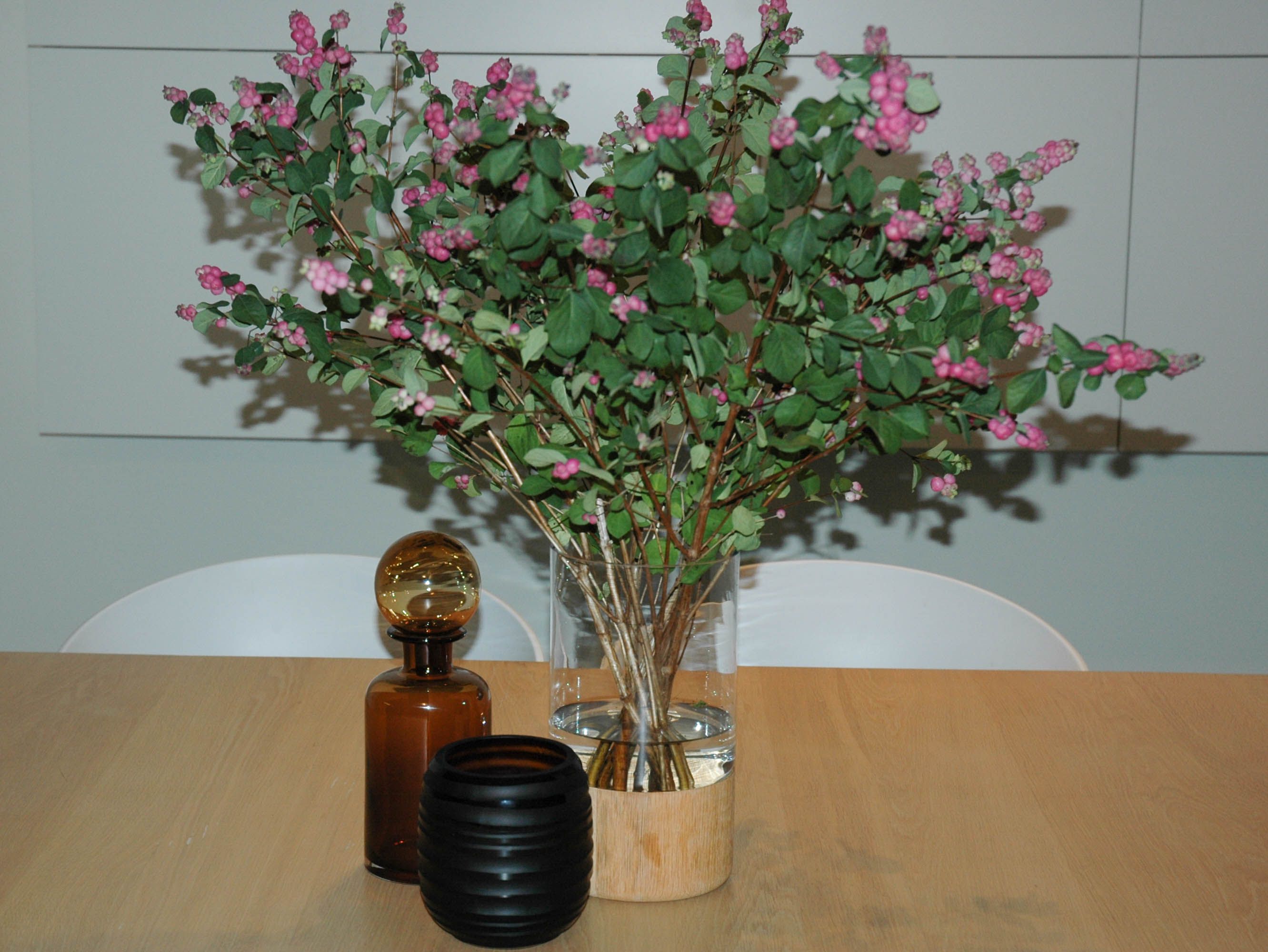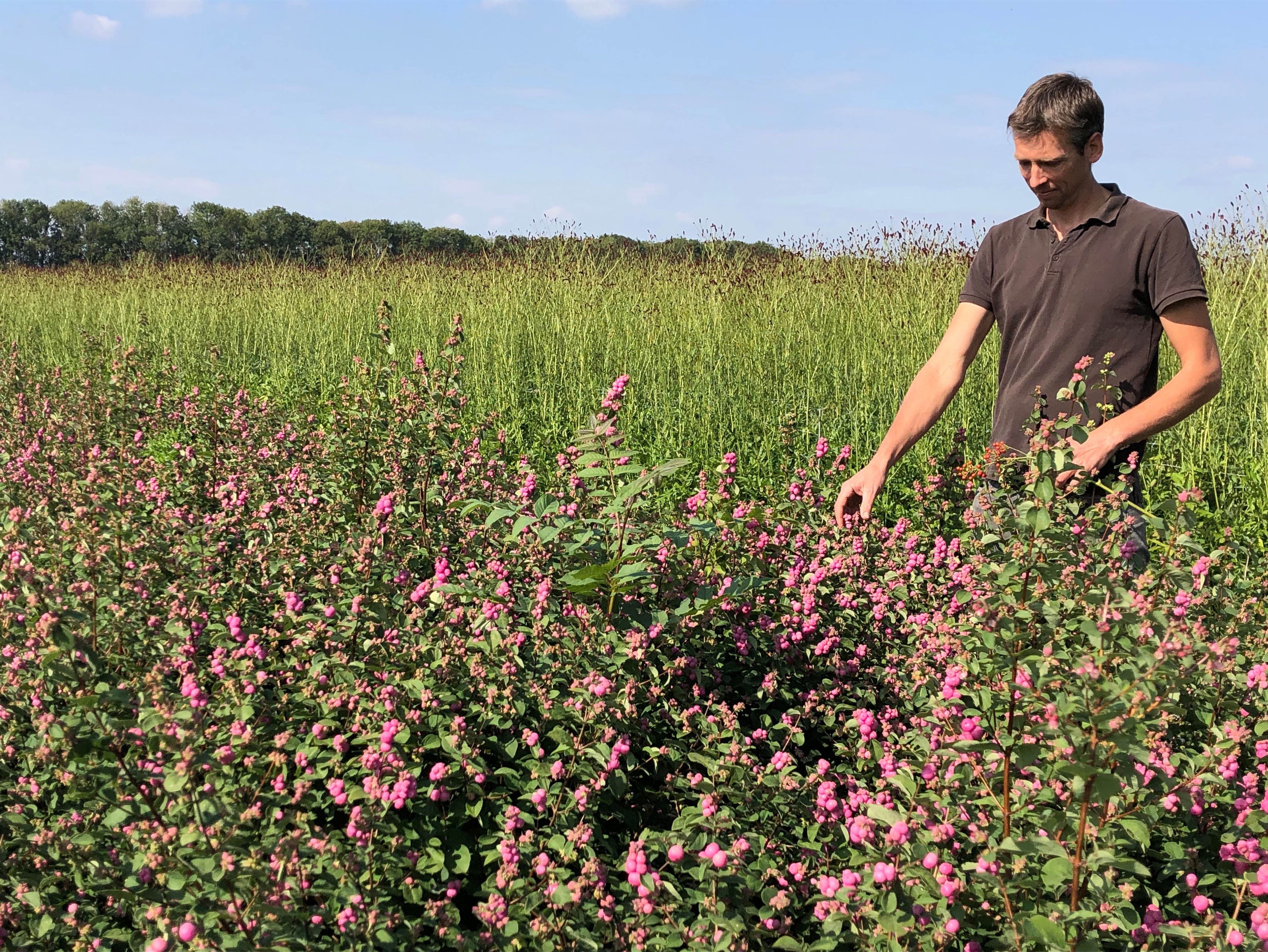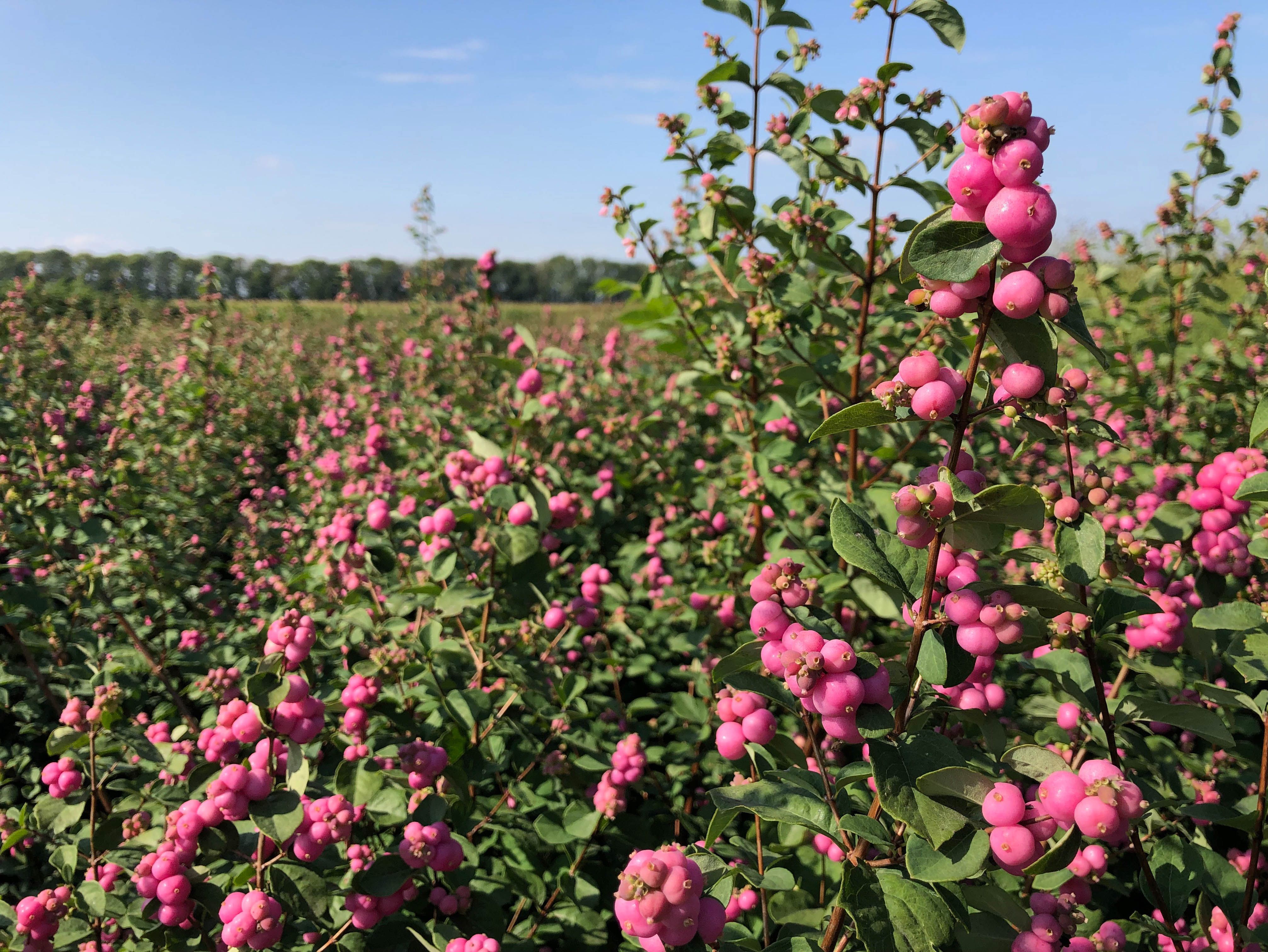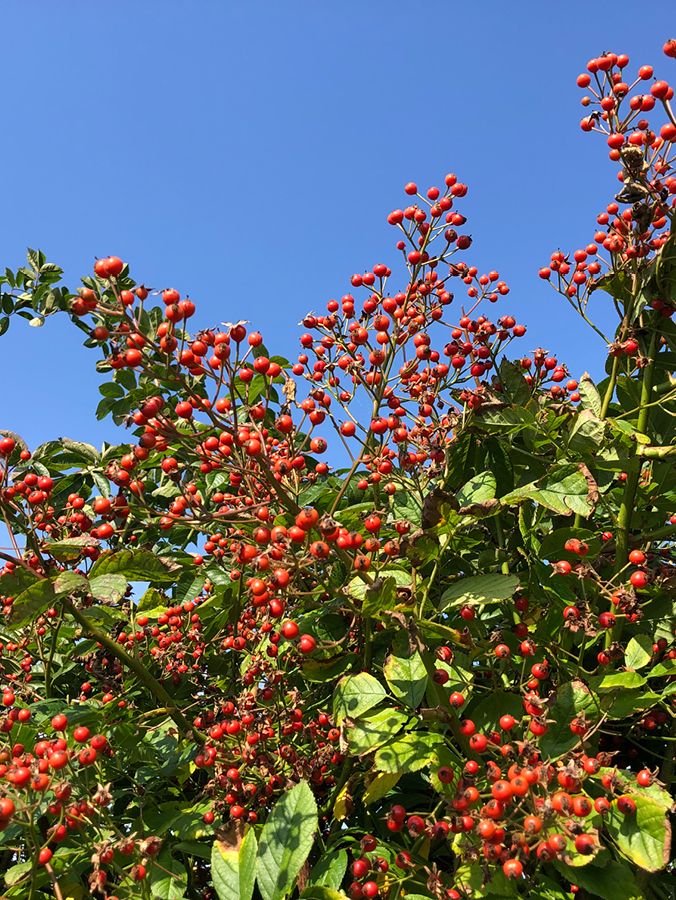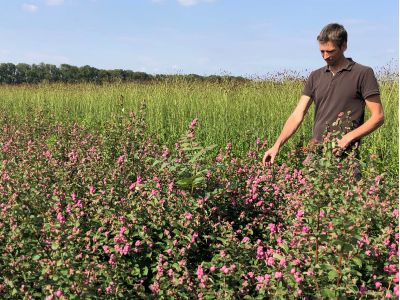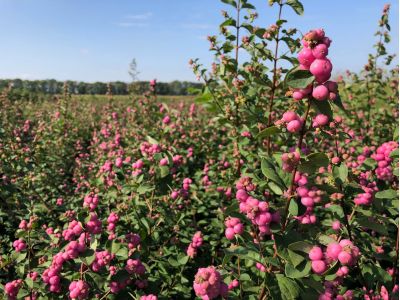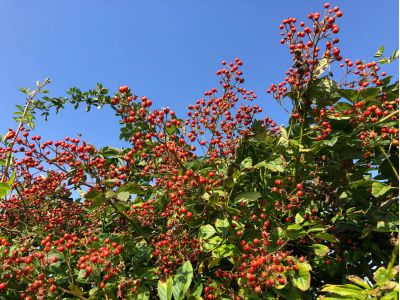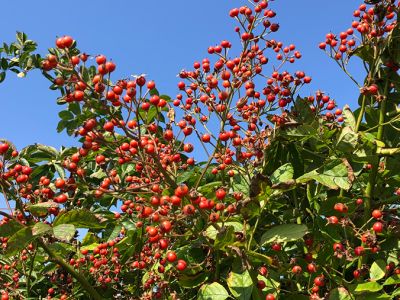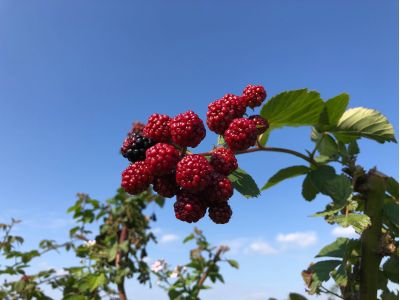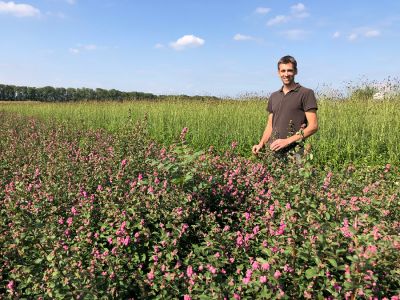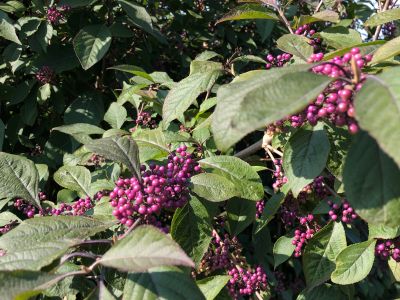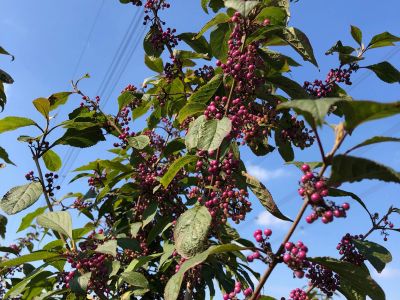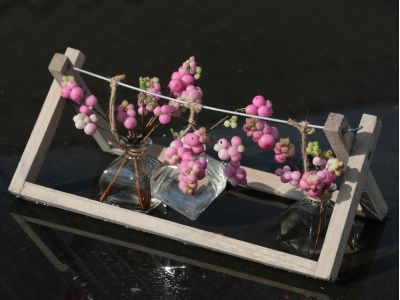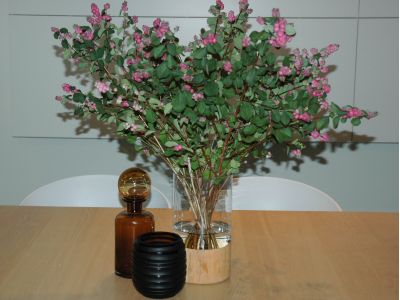Symphoricarpos Magical Treasure
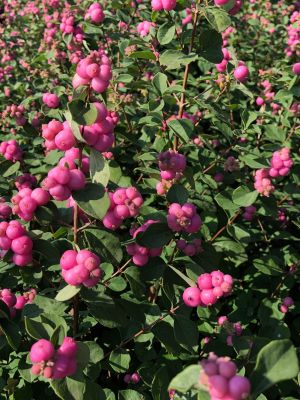
Calendar
In the spotlights
While the sun is still shining at the end of the summer, and we’re slowly moving into autumn, they are already widely available: "snow berries", as we call them in the Netherlands. At the auction they are traded under the name "Symphoricarpos". The white variant is the best known type. But during the autumn months, not everyone is looking forward to this white "snow" berry, because it already gives a bit of a winter feeling. The pink Symphoricarpos is therefore a great alternative for everyone who loves berries, color and autumn! For this edition we visited Rik de Werd, owner of De Werd Sierteelt. A grower of all kinds of branches and other seasonal products!
Versatile agriculture
In the village of Niftrik in the middle of the Netherlands, lies a beautiful large farm with a large piece of land. Here co-owner Rik de Werd grows a very versatile production. He grows arable crops, helps his brother with the dairy cows and, for the last five years, he has made a piece of land available for various ornamental products. We were given a very interesting tour on his property.
Rik and his brother Martien work the farm together. They are the third generation to work the farm and the land. The company has always had a very versatile agriculture and horticulture, providing a good spread of risk and work over the different seasons.
Until five years ago, Rik also worked on experimental gardens, where, among other things, he worked on the sustainable management of pests and diseases. He was introduced to the versatility of the floriculture sector and met many growers. Their enthusiasm was contagious. Rik made a drastic career switch and took on the challenge to grow these beautiful products. Now he grows different types of outdoor seasonal products on a small scale.
Snowberry Magical Treasure
Symphoricarpos albus is a shrub that comes from North America. They are special plants that are characterized by the pear-shaped berries that come in different colors. The berries of this shrub are also called ‘blow’ berries in addition to snow berries, because the berries will blow up when you stand on them. The bush does not make very many demands on the exact spot where it’s being planted in the garden. The plant can tolerate both light and shade. The most famous variety that grows in many gardens is the white variety, and for that reason it has been given the name "snowberry".
In addition to the white varieties, various light pink varieties are also grown. Less known is the dark pink. This is a new variety with a special color. But this variety is somewhat "wilder" than the earlier varieties, which means that there are a number of growers who have removed this variety from the range quite quickly. The branches do not always flower and grow uniformly, so harvesting is laborious. In addition, unlike most species, the branches mature one by one. This allows him to keep cutting a bush until late in the season. According to Rik, this species is very suitable for florists; "The shrub gives some beautiful full branches and later in the season also stems that are branched at the top and have a screen of berries." This makes it a good basis for bouquets and these wild branches lend themselves perfectly to large flower arrangements. In addition, it is possible to use the side branches separately for finer work.
So plenty of reasons for Rik to keep the variety in his assortment. A true "Magical Treasure" among the berries; it lives up to its name.
In addition to the Symphoricarpos "Magical treasure", Rik also grows Symphoricarpos "Magical Avalanche". A white variety that is cut early in the season and therefore ends early. In addition, Rik has planted a second late dark pink variety from breeding company Kolster; Symphoricarpos "Magical Temptation". This will be available starting next year.

The cultivation
The land around the farm consists of rich clay soil. This nutrient-rich soil gives all shrubs enough energy to thrive into beautiful, heavy products. Rik de Werd likes to work with florists. He often asks for feedback to optimize his product and try out other things.
Sustainable cultivation
Growing outdoors, without artificial light or heat, with as little chemical control as possible; that’s what makes Rik happy! Rik therefore finds it important that people know that he grows his products with care in the most sustainable way possible. Quality before quantity. Most of the branches are cut by Rik himself, so that he can keep a close eye on quality. This creates a special, honest and high-quality product. He sees that nature often resolves the problems in a crop by itself. Only when it really threatens to go wrong does he intervene with plant protection products, and preferably with natural enemies and products with a low environmental impact. Finally, the bee colonies ensure good pollination.
Full branches
The biggest challenge of the crop is to get the branch as full of berries as possible, mainly by good pollination. To achieve this, Rik has created various types of Symphonicarpos. In addition, it is important to leave enough space between the bushes, so that the plants have the space to grow. The crop must also be rejuvenated on time. This results in fewer, but heavier branches.
Because the "Magical Treasure" is a bit wild and stubborn in its growth, it offers an additional challenge to prevent the crop from growing too close, especially on the rich clay soil. Rik tries to keep the soil in good condition, it is the basis for a successful outdoor crop. It certainly shows in his products.
A well known problem that can occur in the Symphoricarpos is a slight rot inside the berries. But today’s varieties have improved a lot in terms of vase life compared to those of the past. In order to limit the risk even further, on rare occasions when the weather is particularly wet the crop is sprayed as a precaution. But most profit can be achieved by harvesting the berries on time and not too ripe. Always put them on flower food for optimum vase life.
Seasons
Not only the Symponicarpus caught our attention during our visit. We could not keep our eyes off the special purple berries of the Callicarpa, the bright orange buds of the Rosehip and the shiny red berries of the Ilex. Rik grows different varieties and the most unusual berries. On the one hand because they are just beautiful products and on the other because he was looking for a product that "flowers" late. In this way he can combine it with his farming work. The peak season of the farm crops is more in spring and summer time. Yet he now also grows Sanguisorba, Erinchium (Blue Lagoon and Green Globe) and Helleborus (the strong varieties!), all on a small scale. Rik is firmly convinced that all seasonal products are worth growing; it is the most sustainable way to grow. The consumer brings the seasons into their home. No standard flowers that look the same all year round. Would you like to know more about Rik de Werd? You can find more photos and information on facebook.com/dewerdsierteelt.
FloraPodium, 19 September 2019








